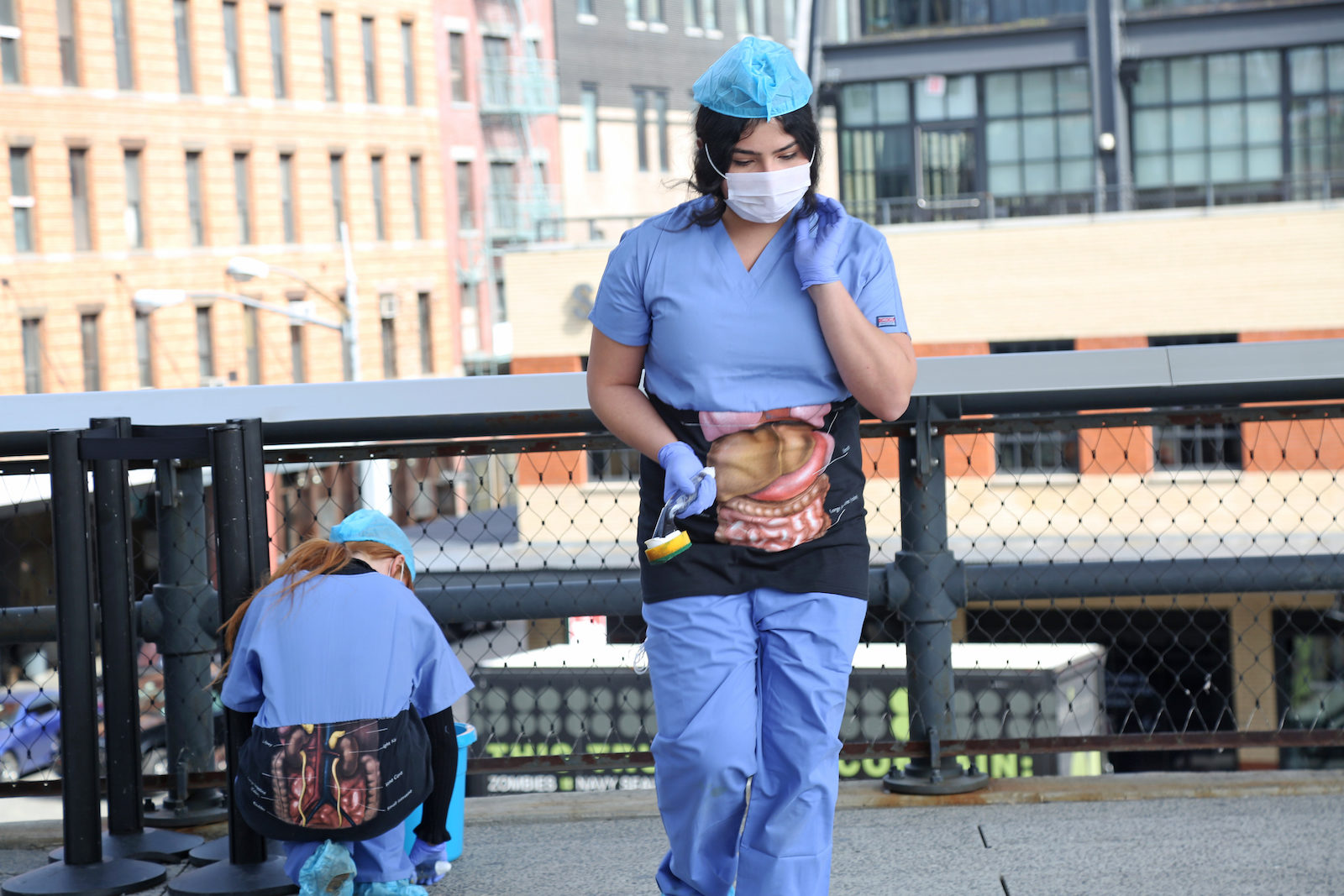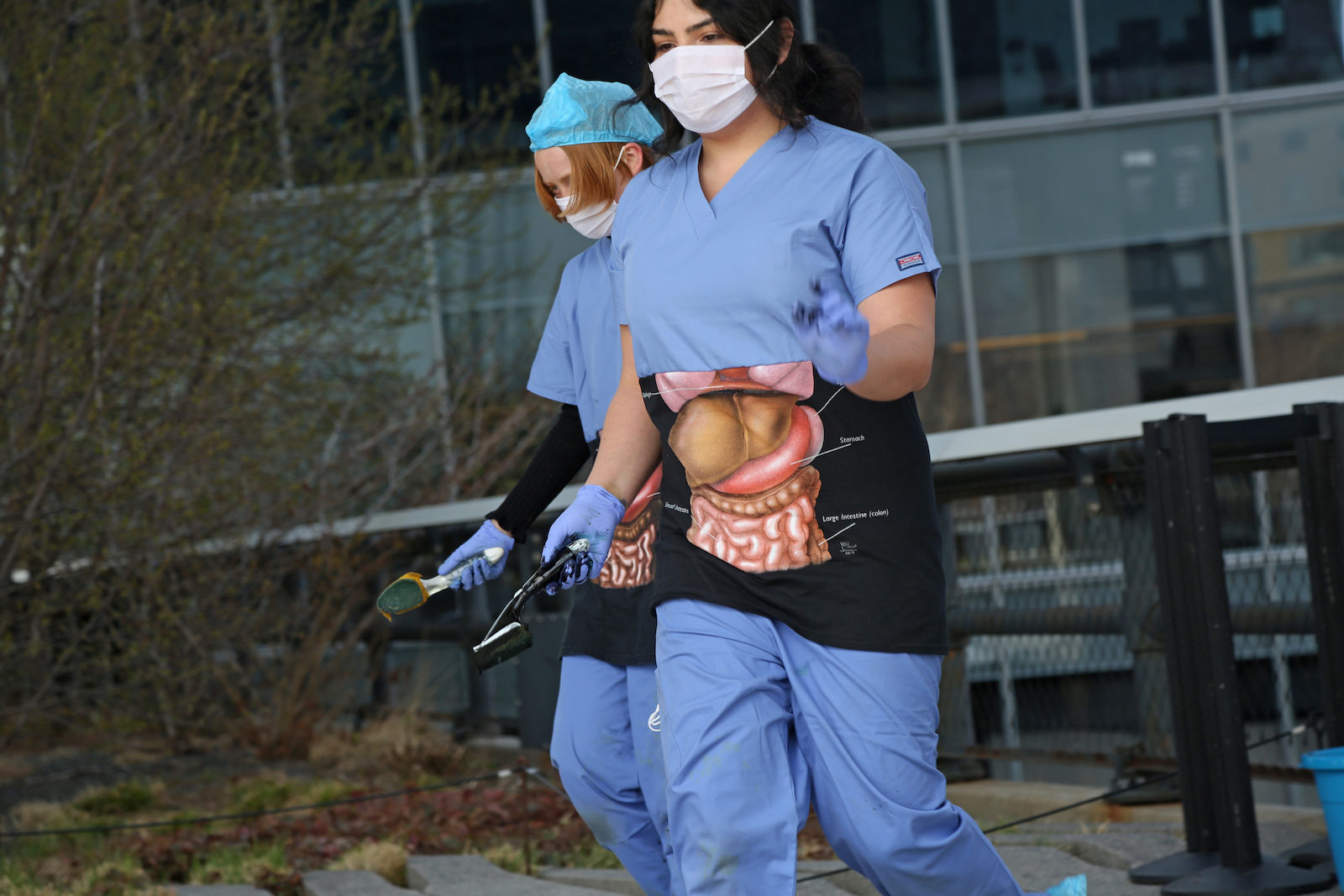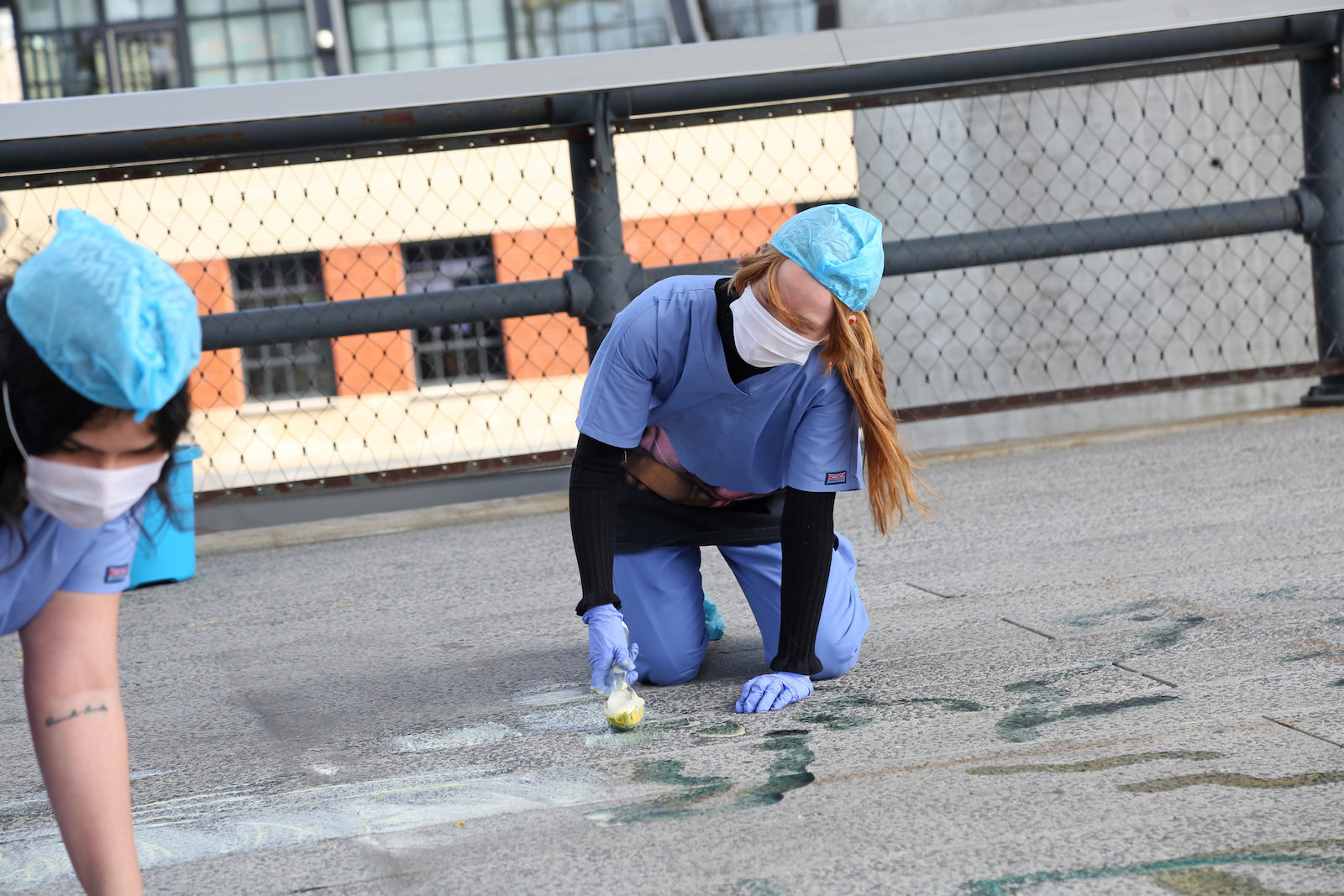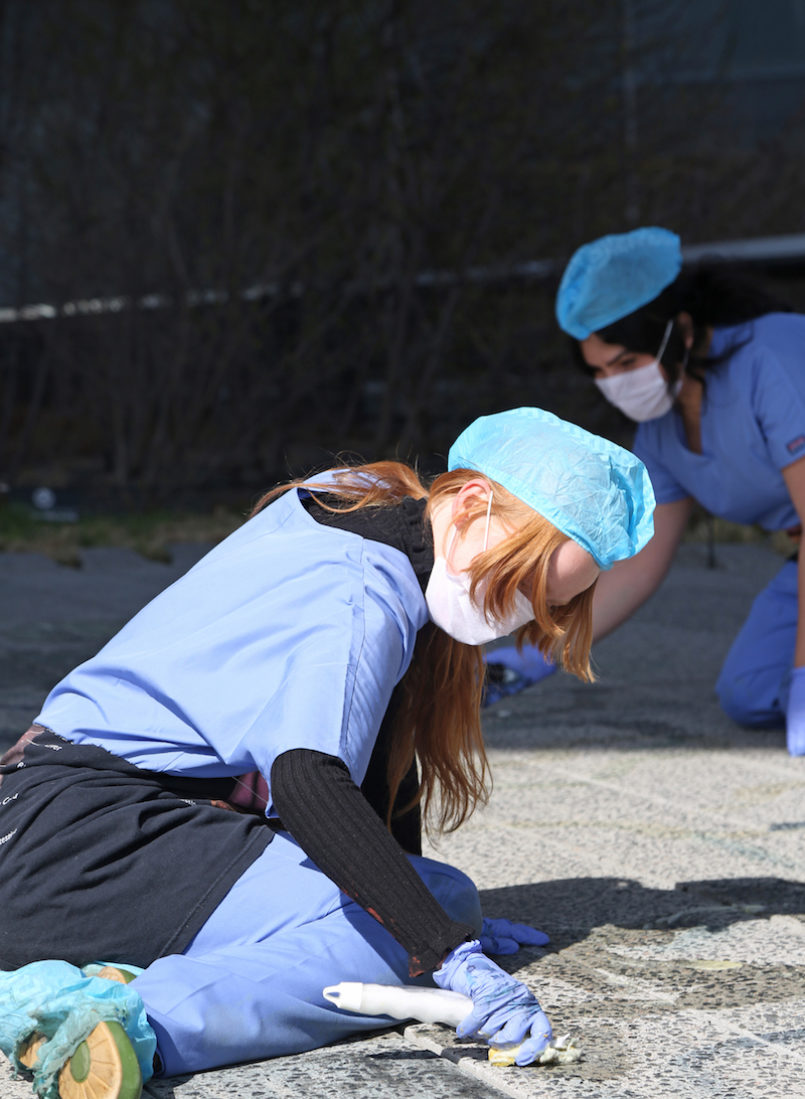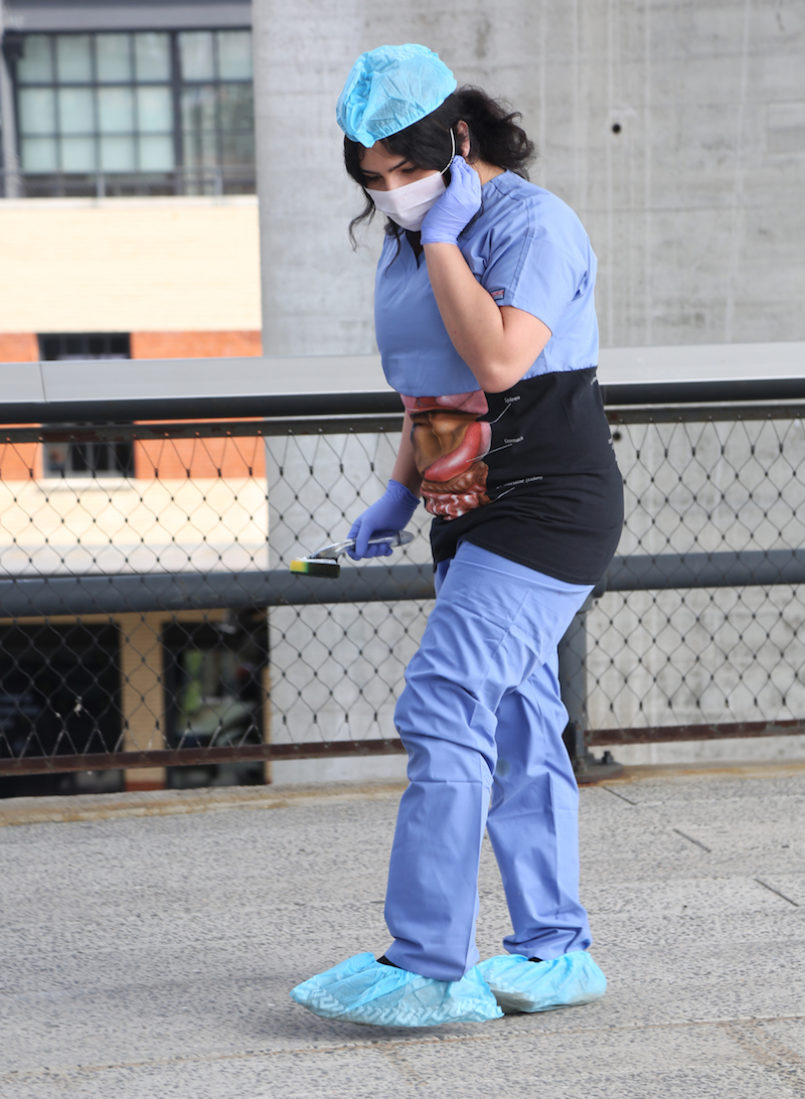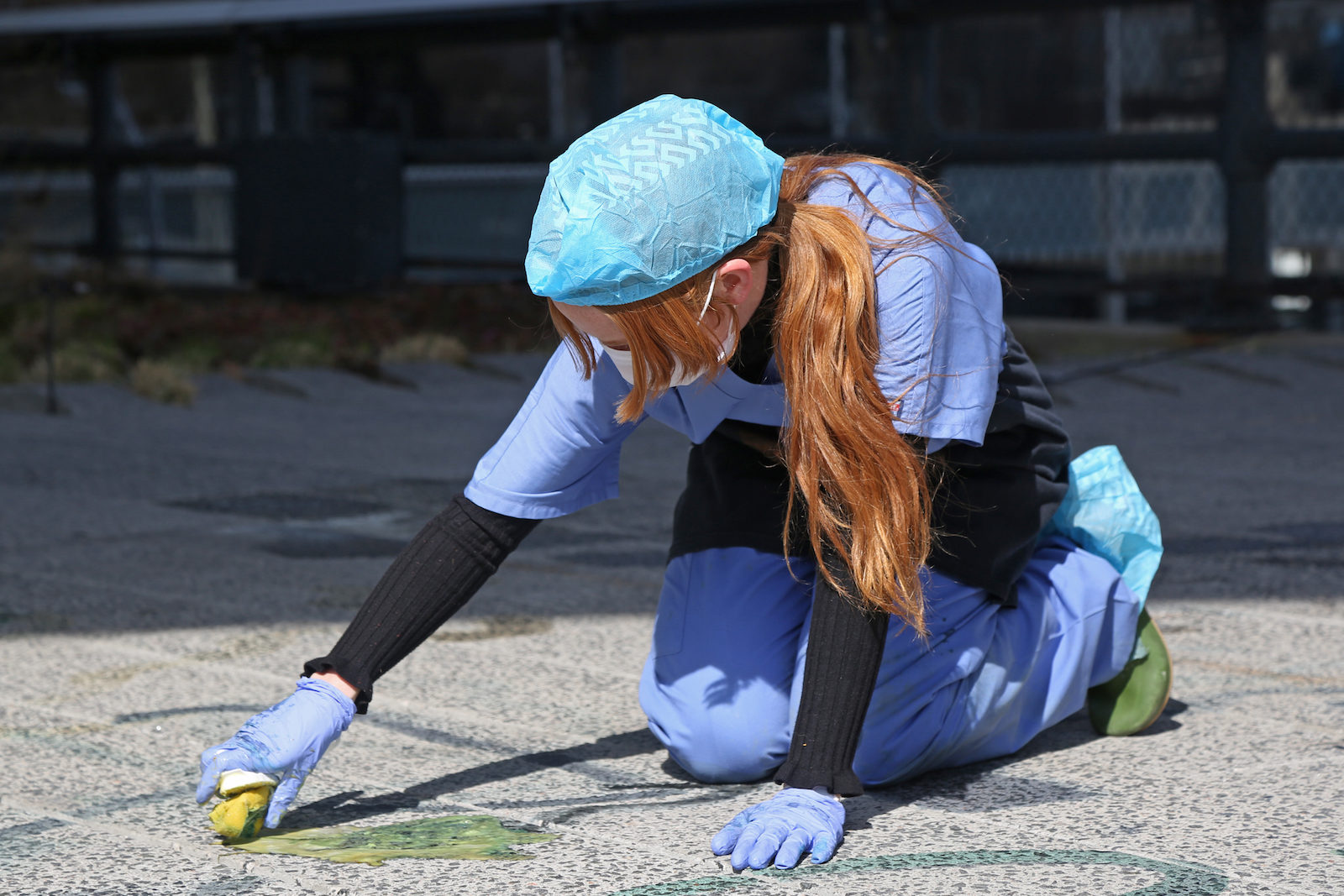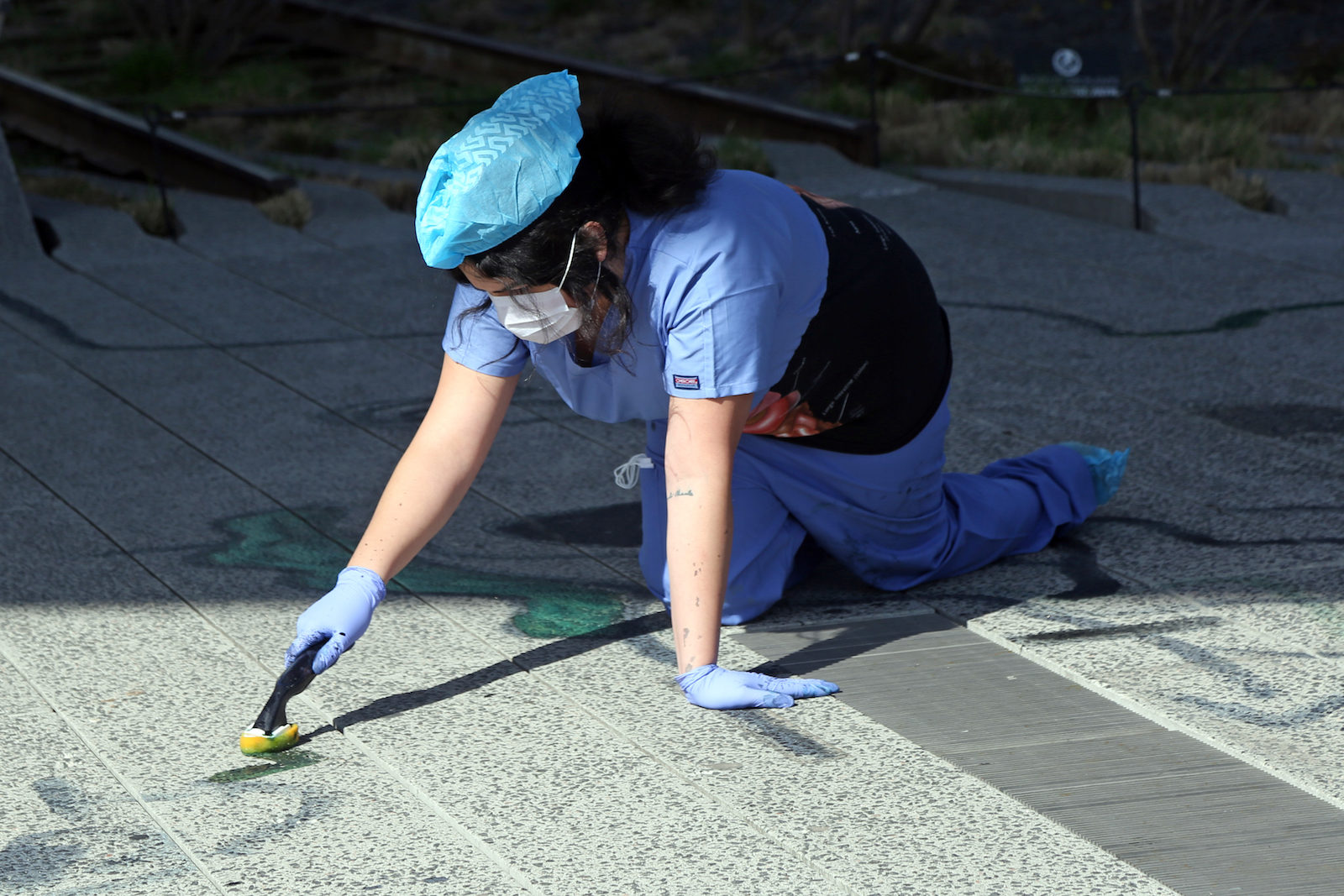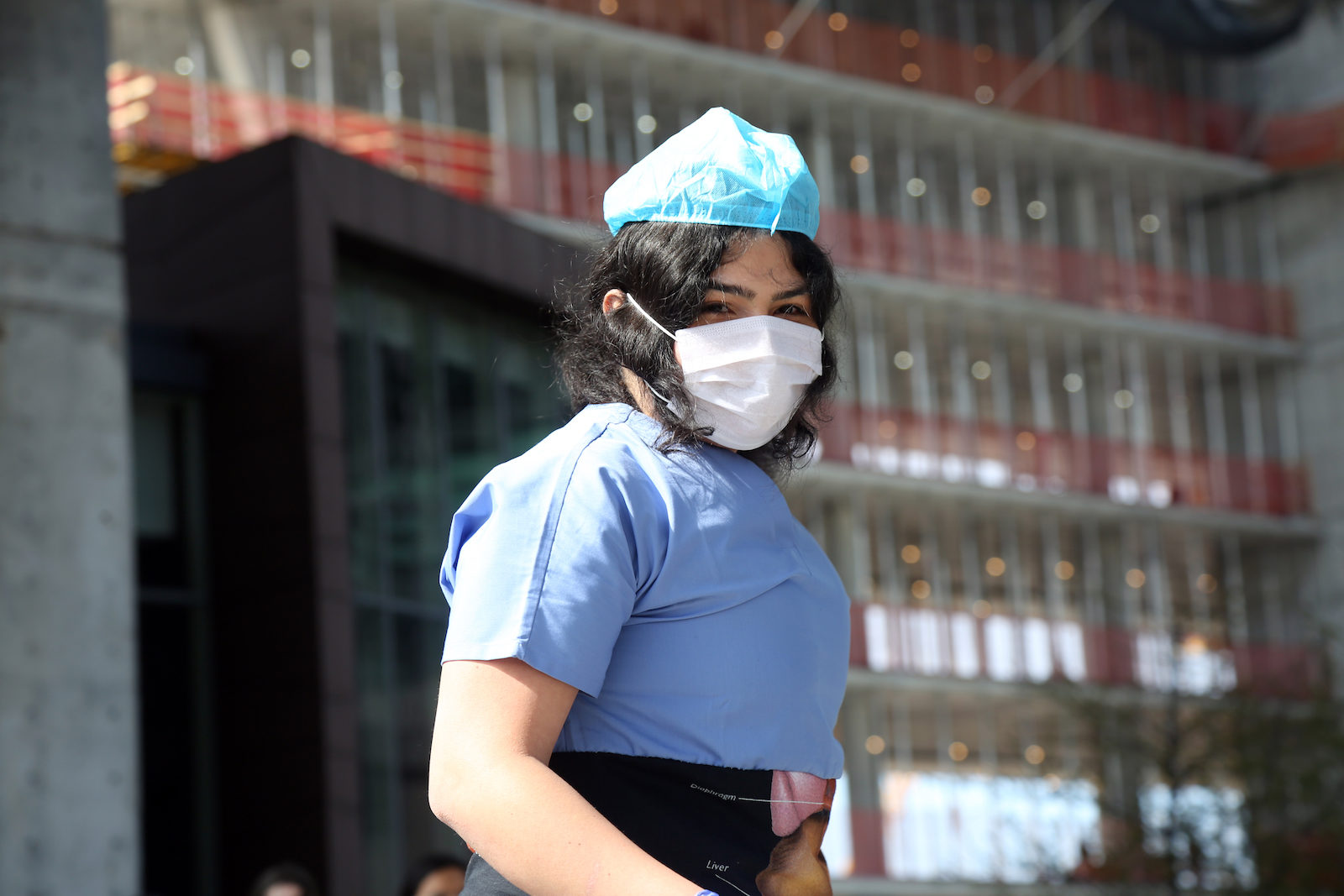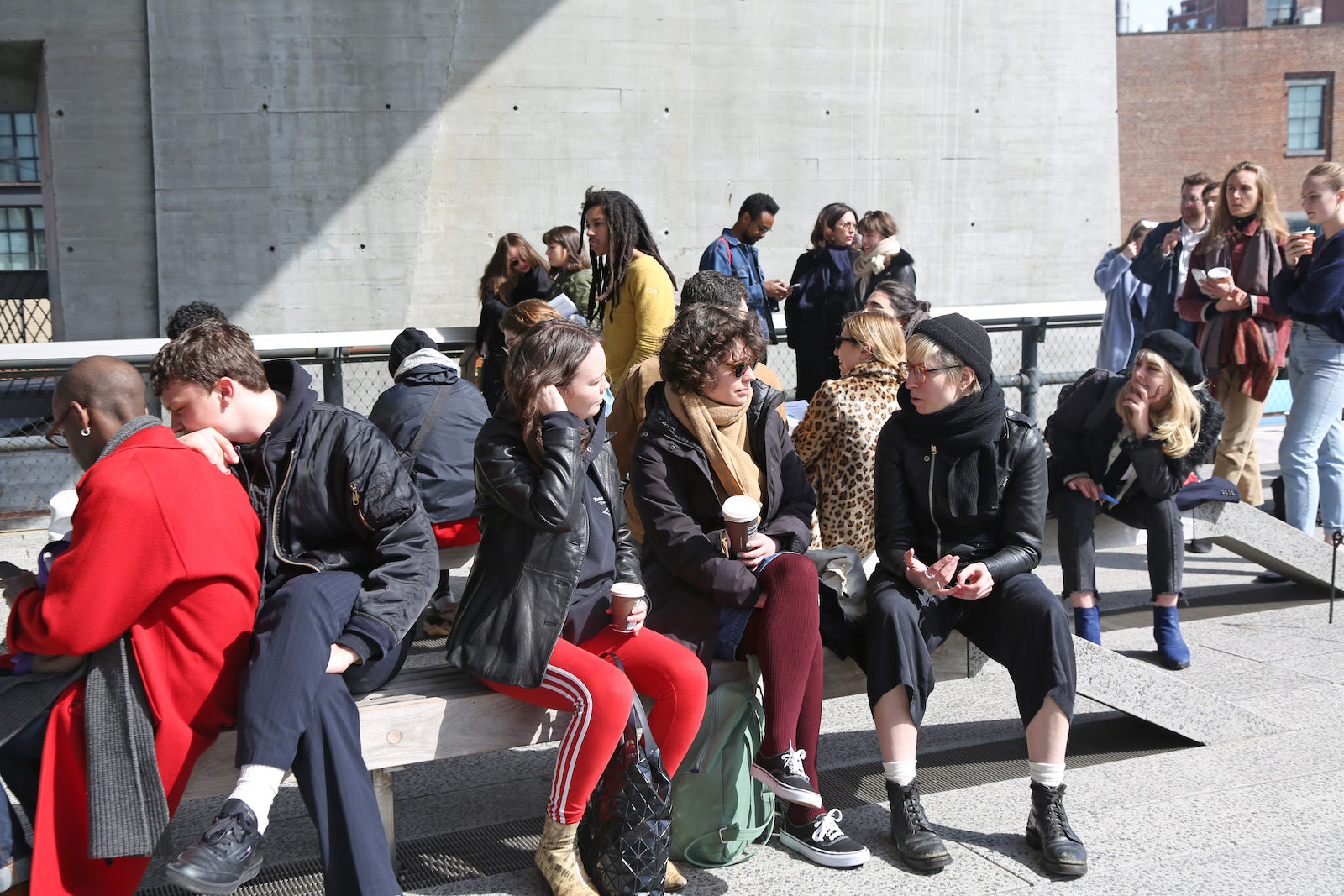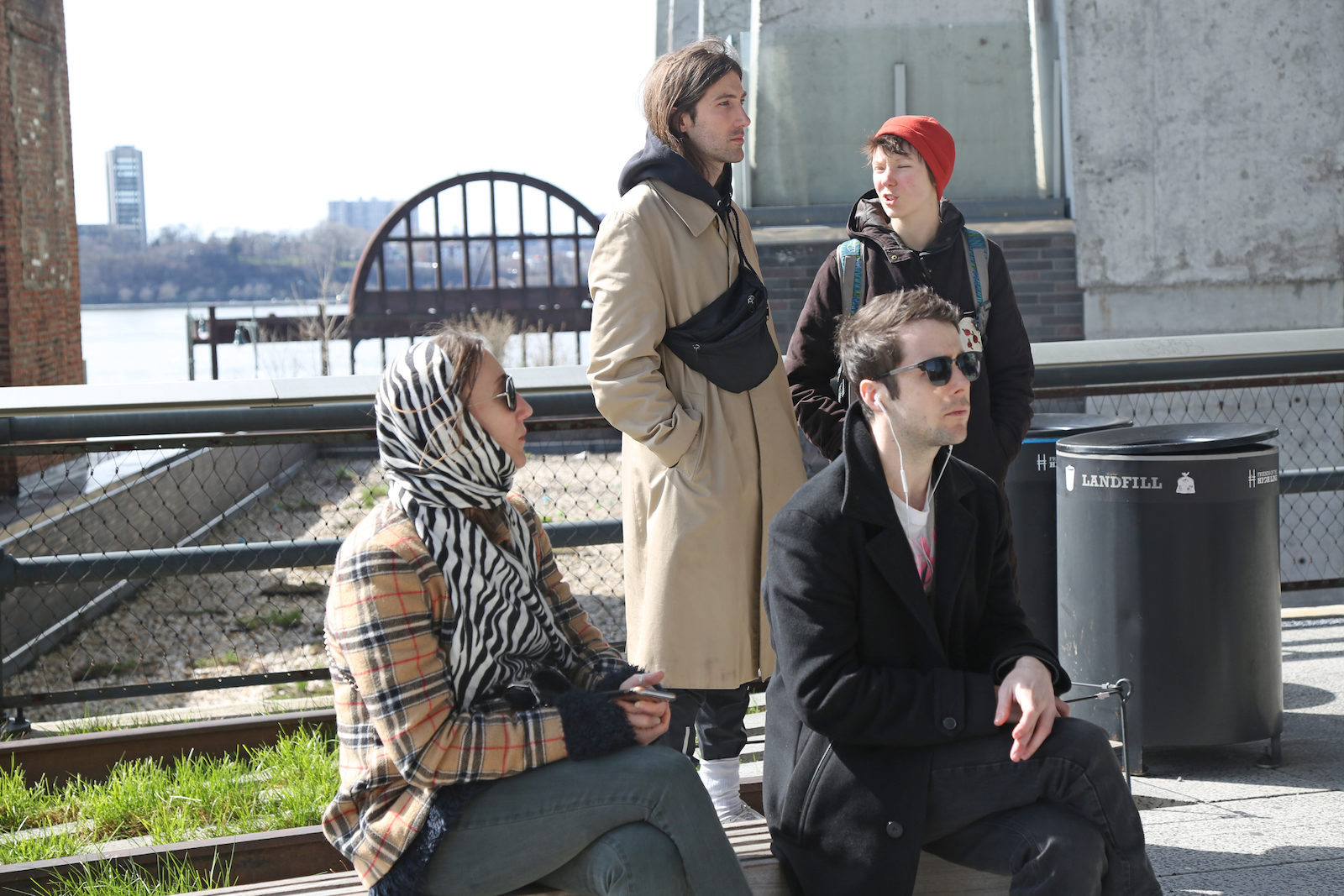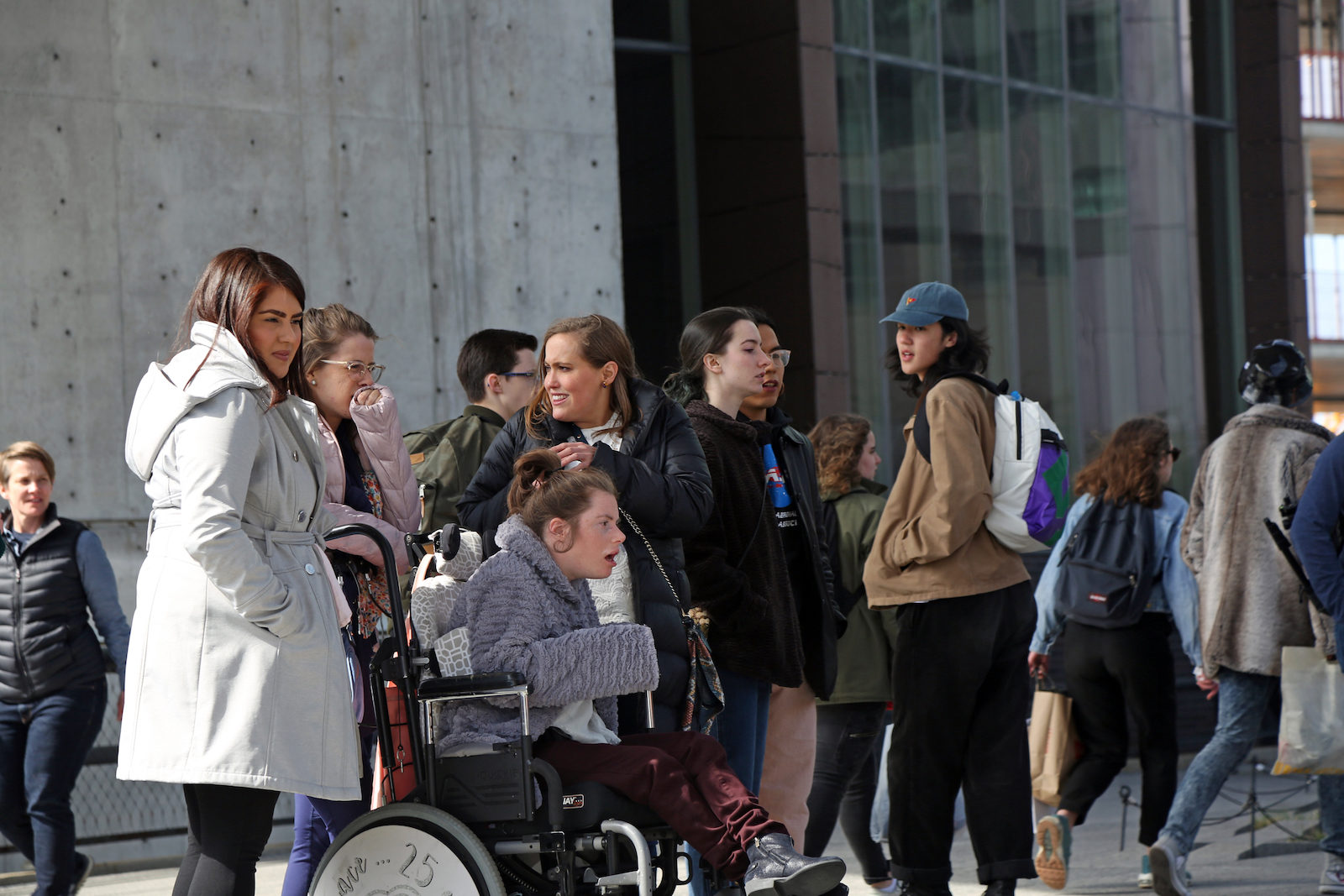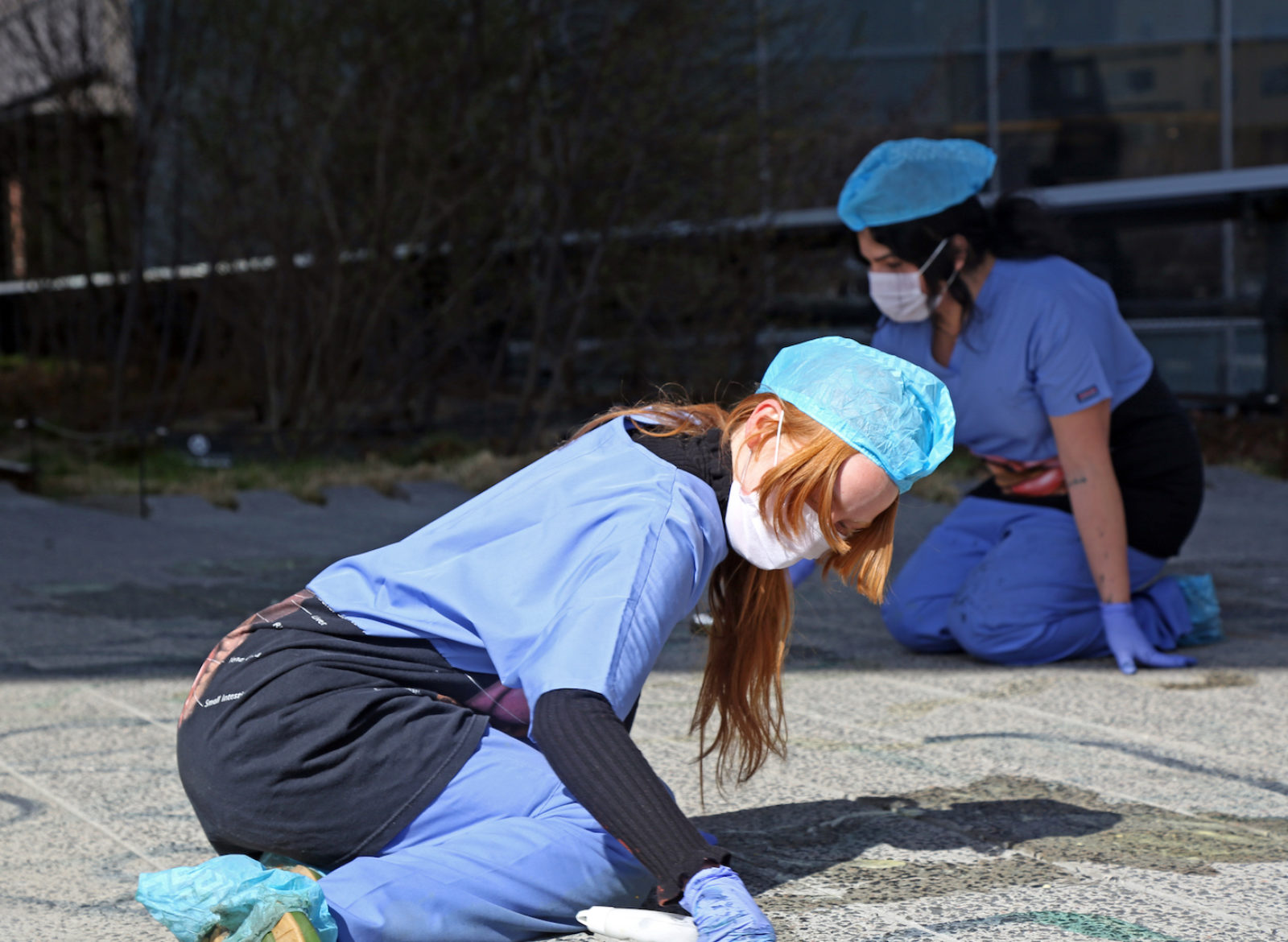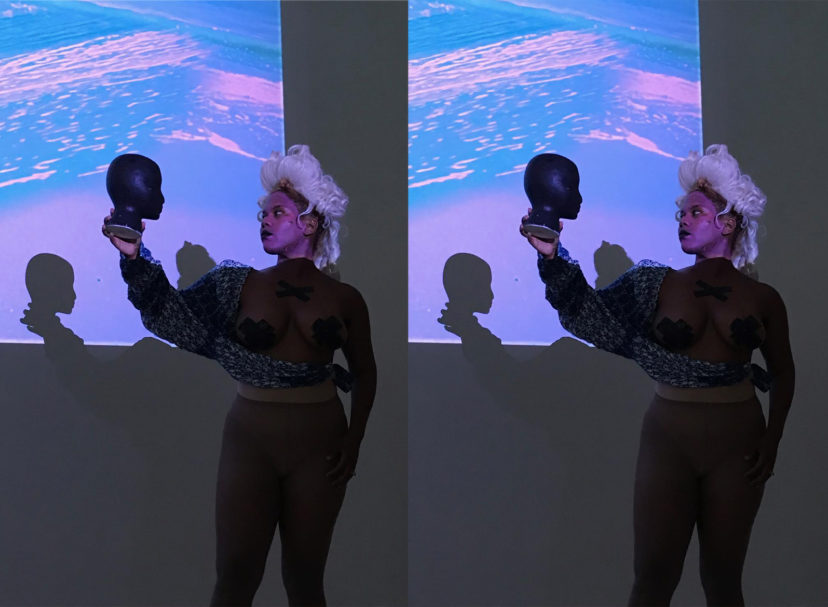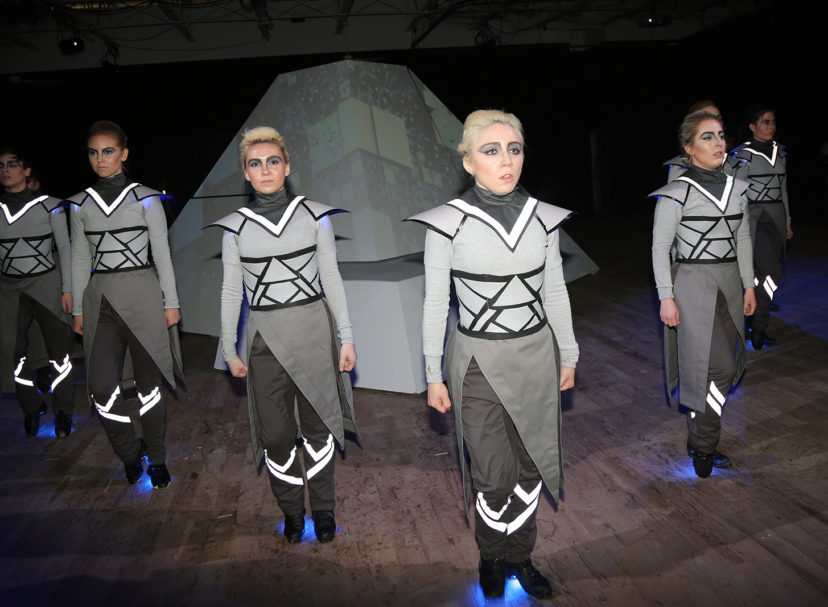Text: Jillian Billard
Photo: Olimpia Dior
On April 7, in honor of the closing of “Allan Kaprow: Paintings New York” at Hauser & Wirth, New York-based artists India Salvor Menuez and Ser Serpas recreated one of the artist’s signature “Activities.” Kaprow is most recognized for his breakthrough innovations to performance art, specifically his influential series of Happenings, but what is lesser known is that he actually began as a painter. Hauser & Wirth highlighted this, exhibiting the Kaprow’s rarely seen early paintings and drawings and tracing the evolution of his thought and process. What remains consistent throughout Kaprow’s practice is his dedication to blurring the lines between everyday life and art; finding particular interest in ritual activities.
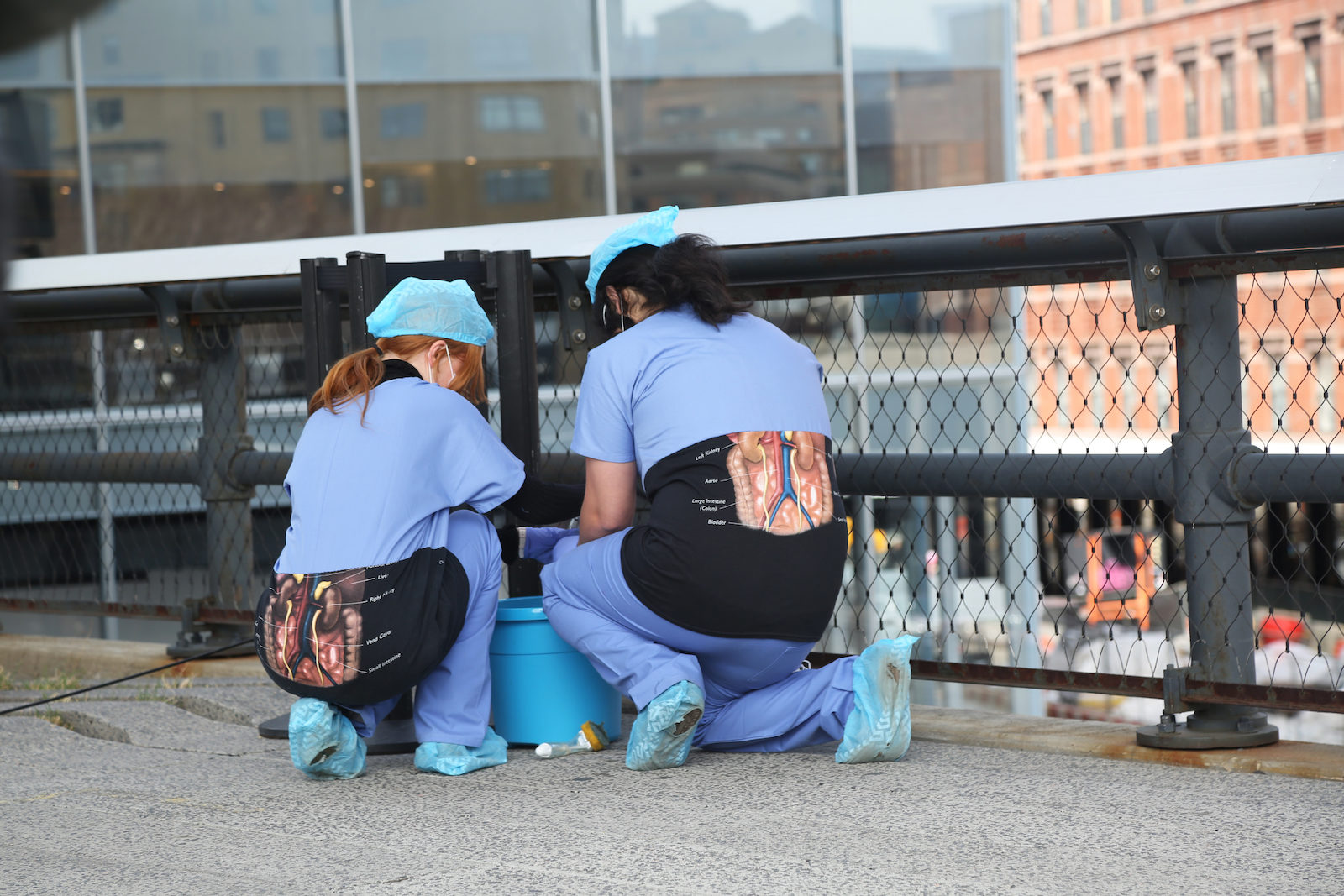
An apt way to end the show and elucidate the lasting influence that Kaprow has had on contemporary performance, Serpas and Menuez adapted one of the artist’s seminal activities, first performed by Kaprow at Kunsthalle Palazzo in Liestal, Switzerland in 1996 and later at Mills College in Oakland California in 1999. The act initially consisted of one person drawing a line on the street with chalk, while a second person followed behind them with an eraser, undoing all of the first person’s work. The process went on like this until the chalk or the eraser was completely used up. In his 2004 book titled Childsplay: The Art of Allan Kaprow, curator and critic Jeff Kelley wrote of the act, “echoing back through a hundred years of avant-garde erasures, this elegant, prolonged duet involved an unplanned social give-and-take that focused primarily on who was in charge, who worked harder, and when the activity was finished.”
Serpas and Menuez reinterpret the work with the addition of costuming, which they co-designed and created with artist Puppies Puppies. They each wear standard blue hospital scrubs complete with face-masks, caps and foot covers. The lower portion of each shirt is replaced with a black T-shirt, printed with an illustration of the internal organs of that region. The performers are unrecognizable, which is their aim; the uniform costumes serve to conceal any normative signifiers of the bodies that wear them.
Instead of chalk and eraser, Serpas and Menuez use ink and sponge. Each using an identical sponge attached to a plastic handle (Serpas’s is dipped in black ink, and Menuez’s in solvent/cleaning material), the two busy themselves with their work, seemingly unaware of the other’s presence. Drawing on the aesthetics of Western hygiene and the often invisible labor of maintenance, we watch the performers work tirelessly to maintain some sort of equilibrium between creation and undoing. A crowd gathers as Serpas paints large curved ink lines onto the paved walkway, and India sits with legs sprawled, scrubbing vigorously at the dried ink lines. The game goes on for about an hour, as the instruments and scrubs become increasingly tattered and dirtied.
The performance illustrates a tenderness; a rawness. As viewers of this banal ritual, we become aware of our vulnerability, to be marked and erased. Beneath the guise of our uniforms we are susceptible to exposure, to hurt, to an unraveling; followed in tail by a swift sterilization, eradicating any the visibility of our intrinsic disorder.
